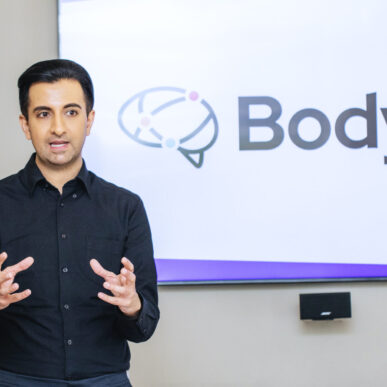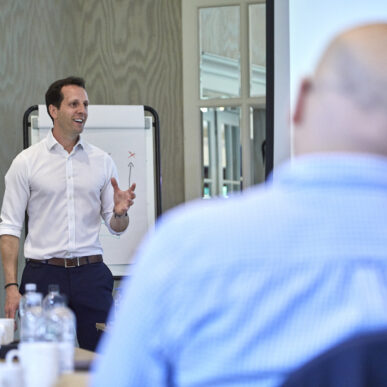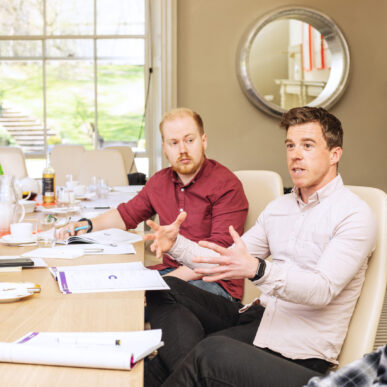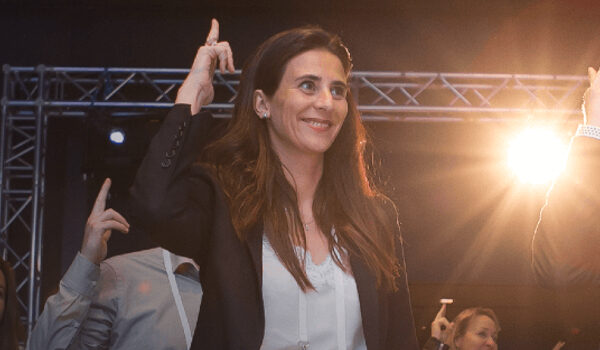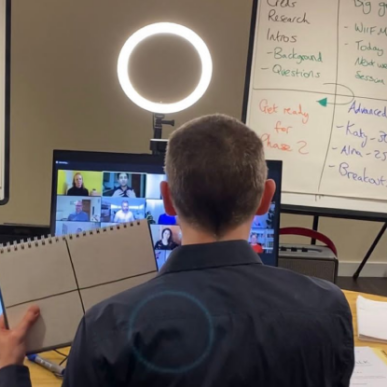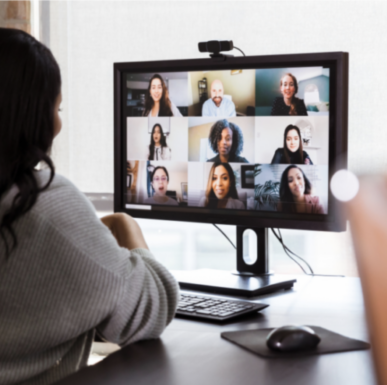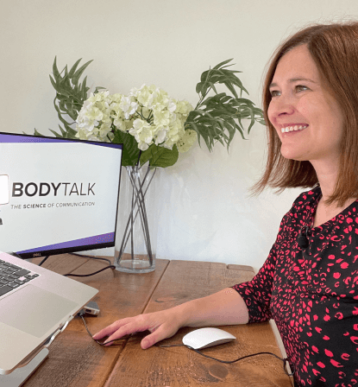“All a visualization does is flip the script on anxiety”
8 Small But Powerful Ways To Make Sure Your Next Presentation Leaves A Lasting Impression
When it comes to nailing a presentation, success is in the details.
Little things like doing a soundcheck, touching base with the IT guy on site, and being sure your drink has a spill-proof lid prevent big problems before they happen. And double-checking these steps only take a few moments.
I’ve learned over my years as a professional speaker and coach that running through a checklist before I step on stage not only helps me focus, it soothes my monkey mind.
Here are a few more of the can’t-miss items on my list:
1. Bring Your Own Clicker
I always bring my own clicker.
Usually, there’s a clicker available at the venue for you, but there’s no guarantee that it will work. If you bring your own, you’re covered.
For example, I spoke the other night in London to a crowd of 500. One gentleman hadn’t brought his own clicker. The one he was using was broken, and so we spent the entire time he spoke wondering if we were looking at the right slide. The screen behind him flicked back and forth between various slides throughout the presentation, never quite matching what he was saying. It got worse when IT guy kept interrupting his talk to try and fix the clicker for him. He had flown from the US just to give his talk and this simple bit of kit had let him down.
So I don’t take any chances. Whenever possible, I use my own laptop and clicker.
2. Check the Microphone — before you get to the venue
I know some people may be shy about their tech, thinking, “Oh, I’ll use whatever mic they give me.”
But contrary to helping, this mindset makes your job harder. You could get stuck behind a lectern that’s too tall for you with a half-broken microphone. And you’ll be stuck with it, trapped in a situation you don’t want.
There’s absolutely no harm in asking for a clip-on or headset microphone in advance of your speaking time. This type of mic will give you the greatest freedom to interact with your audience and use the stage.
And the sound crew will appreciate the specificity in advance — it saves everyone time fixing things later.
3. Put Lids on Your Drinks
I mentioned this before, but I mean it: get a water bottle with a spill proof lid.
No matter how big the room may be, you always run the chance of someone knocking your water or coffee over onto your equipment. Which may sound ridiculous, but it’s a lesson I learned the hard way.
Two minutes before I was supposed to give a presentation, I was prepping with a glass of water next to my laptop. One of my colleagues gestured while speaking and knocked it over the computer, completely killing it.
In a single motion, I lost $2000 and the ability to give my presentation.
Don’t relive this reality — bring beverages with a lid!
4. Avoid Huge Meals
We all get nervous before we speak, and nerves can make your stomach sensitive.
Because of this, you should avoid having a big meal before a pitch or meeting — even if you have to turn down free lunch. Clients will sometimes say, “Hey, I’ll feed you lunch and then you can get up to speak.” But your nerves may not agree with a full stomach.
I prefer to pack my own snacks — healthy, easy-to-digest items that make me feel ready to go. That way I’m not reliant on what’s available, and I don’t have to worry about digesting a big meal before giving a presentation.
5. Check the Sound in Your Presentation Space
It doesn’t matter if I’ve done the same talk 2, 20, or 2,000 times — I always make time to check the sound. And I don’t mean just the mic. This type of check is more about gauging the acoustics of a room and getting a feel for the size of a space.
This isn’t only for auditoriums — you can do it in a boardroom for 10 people. Simply arrive before your team or the client and speak out loud in the space.
Again, this is all about calming your monkey mind. You’re helping it think, “Okay, it sounds fine in here. I understand what it will feel like when people arrive.” Essentially, testing the space in advance kills any mystery about how things will actually go in the moment, increasing your confidence.
6. Do Vocal Warm-Ups
When my career first started I walked out to speak for a few short minutes and found I couldn’t get my mouth to open — it was too tense, too tired, and entirely unprepared.
In order to avoid sounding raspy or hurting my throat, I warm up my mouth and vocal cords. I usually do this in the last five minutes before starting a presentation with a combination of “sirening” and tongue twisters.
Sirening is a vocal warm-up where you make an “ng” sound — as in the end of “sing” — while very gently working through your vocal range. It creates a warmth that’s comparable to limbering up before going for a run.
Once you’re warmed up you can do tongue twisters to help with mouth tension. You’ve probably seen a few of these in movies where actors are warming up — “The tip of the tongue, lips, and teeth” said very dramatically with a lot of over-enunciation. And admittedly, it is very silly. But it’s also very good for keeping your jaw and mouth loose so you can perform your best.
7. Visualize Serenity and Success
In the last few moments, before I get on stage, in whatever room I’m in, I close my eyes and do a short visualization.
I imagine going through my presentation and everyone in the room reacting how I want them to. Now, I know I have no control over this, but it’s a way of telling my mind, “This is what we’re aiming for.” It helps me know what actions to take to get to my desired result. I have a clear intention for how I want the audience to feel and everything else aligns with this.
All a visualization does is flip the script on anxiety. Where anxiety is imagining a negative version of the future, a visualization is imagining a positive one — the one you want.
8. Breathe
Finally, make sure you breathe.
But don’t just “take a deep breath.” This actually creates more tension in your body. Instead, just as you’re about to enter a room or take the stage, exhale out for several seconds. Gently push the air out of your body to relax. Then allow the air to gently come back in. I focus on this for two minutes to gain the full benefit.
I’ve found this gets me into a nice, diaphragmatic breathing rhythm while sending oxygen to my brain — which keeps the monkey mind quiet. It will help you feel like you are ready to be the best version of yourself.
To learn more about how we can help you please contact our team and discover how we can help to improve your presentation skills.








